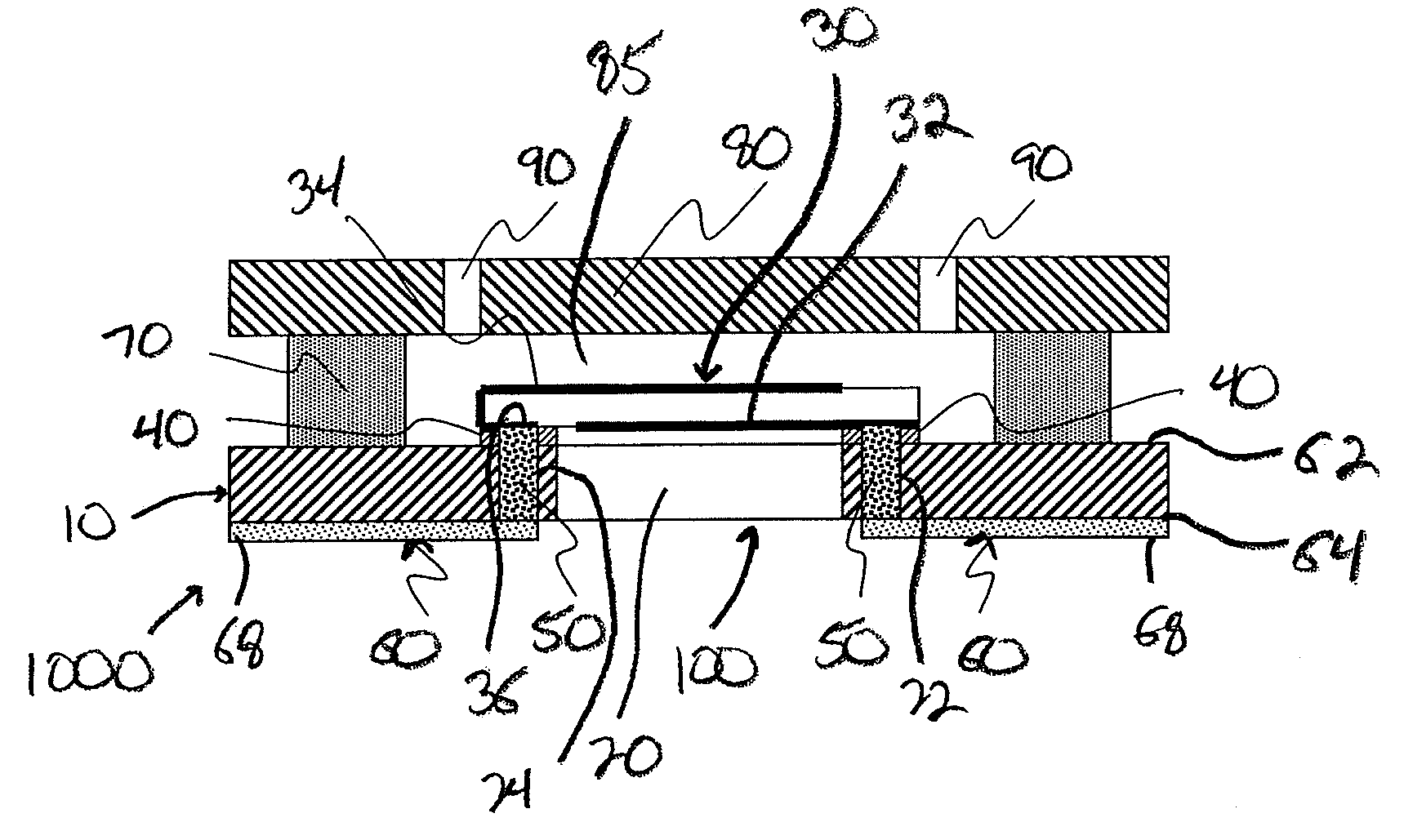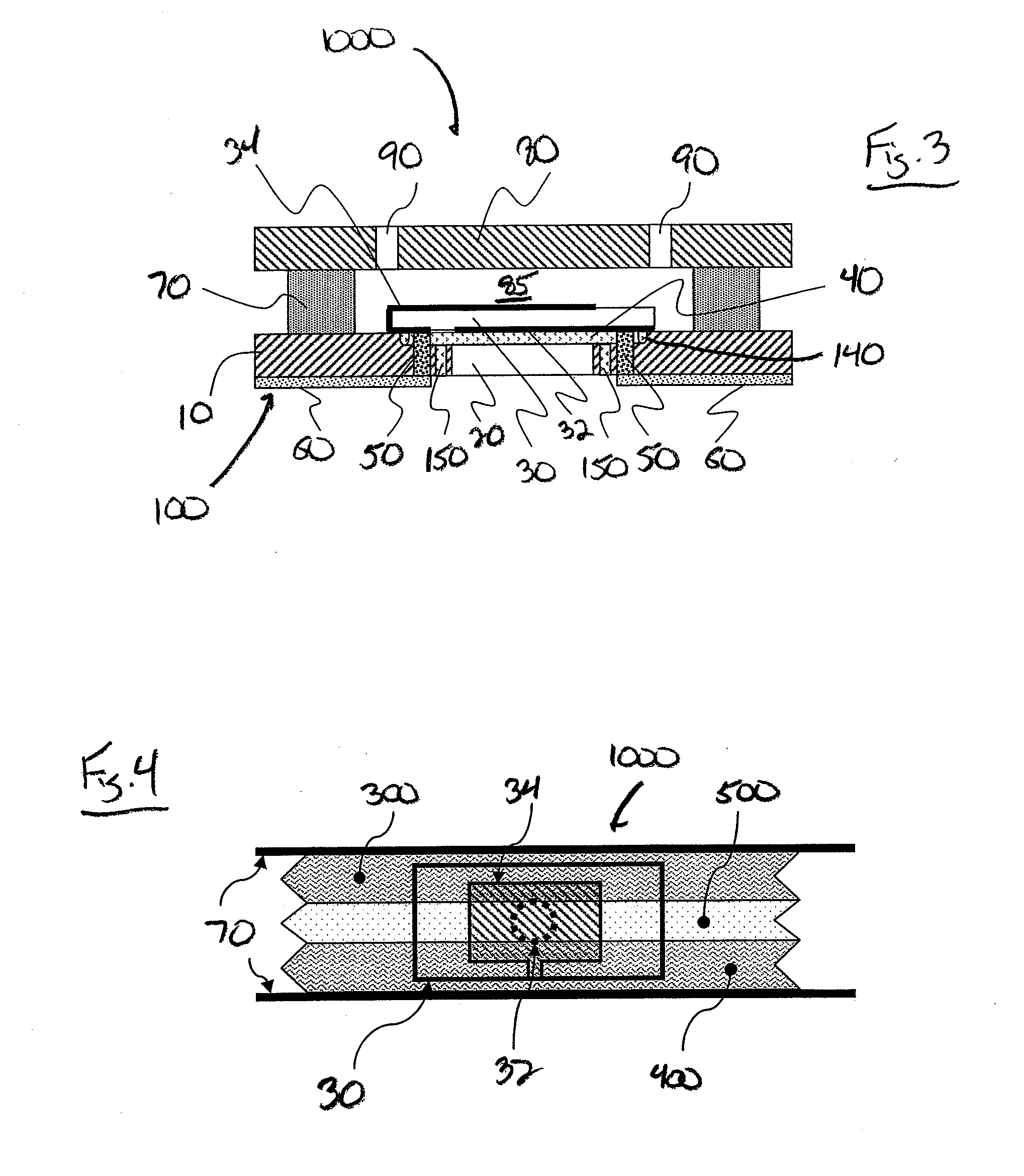As noted by the patent's author, a problem of this resonator mounting configuration is that the O-rings or gaskets exert fluctuating and non-reproducible pressure on the oscillating resonator, which directly impacts the sensitivity of the resonator.
However, this setup has the following drawbacks: 1) sensor response is strongly influenced by mounting pressure of the sample fluid within the
cell, and this pressure adjustment is not readily reproducible; 2) during assembly, the
quartz plate is handled directly resulting in the risk of damaging the fragile
quartz plate; and 3) even when fixed firmly between the O-rings, distortions due to pressure fluctuations in the tested liquid, and expansion or contractions of the plate due to thermal changes will stress the sensor plate and cause friction between the sensor and the O-ring which in turn will result in decreased Q-factor and unsteady oscillations, i.e.
noise sensor response.
This description highlights one of the basic problems in the use of oscillating crystal resonators in liquid-based applications.
However, any and all physical contact with the resonator, i.e., from the sample fluid, the mounting structure, e.g., the O-rings, etc., dampens its oscillation freedom and thus lowers it sensitivity and overall functionality.
However, because the resonator oscillations propagate out to the edge of the piezoelectric plate (even if the coated
electrode does not reach to the edge of the plate), any component making physical contact with the sensing surface will
impact the resonator response.
Also, even slight distortions of the resonator from mechanical or thermal variations of the mounting assembly will result in
noise added to the sensor response.
As a result, none of the designs disclosed in the applications facilitates the construction of a reproducible sensor assembly.
However, this improved design still suffers from a number of problems that have been discussed in literature publications released following the patent filing.
In particular, in practice it is very difficult to uniformly apply flexible
adhesive around the edge of the very thin resonator plates (˜100 um) without depositing some amount of adhesive onto the sensing surface.
Thus, even slight imperfections on the mounting surface will result in irregular stress on the resonator and
noise in the sensor response.
Another problem with the use of oscillating crystal resonators in
liquid based applications is the
signal noise and response reproducibility issues arising from changes in
hydraulic pressure on the resonator surface(s) during sample analysis.
The processes involved with executing the additions and exchanges of sample and non-sample solutions to the sensing surface of the resonator result in pressure changes on the resonator surface(s), often resulting in non-reproducible stress on the resonators and dampening of the crystal oscillations.
These stresses and dampening events can greatly diminish the sensitivity and reproducibility of the resonators as
mass measurement sensors.
A problem with this type of solution comes from the design constraints of applying pressure on the backside of the mounted resonator due to the presence of the electrodes and the detection
electronics connected to those electrodes.
Also the intrinsic dampening of the resonator oscillations from exerting pressure on both faces of the resonator, and the difficulty in accurately matching the
counter pressure on the driving
electrode surface to the pressure being exerted on the sensing surface by the sample fluid or solution, make this practice highly impractical.
Thus, while the current resonator mounting designs are functional, they are far from optimal.
Often the influence from erroneous signals in the form of response dampening,
random noise, and drift created by the resonator mounting process lowers the sensitivity and reproducibility of the resonator to such a degree that the technology is not feasible for the majority of desired applications as a
liquid based sensor.
 Login to View More
Login to View More 


